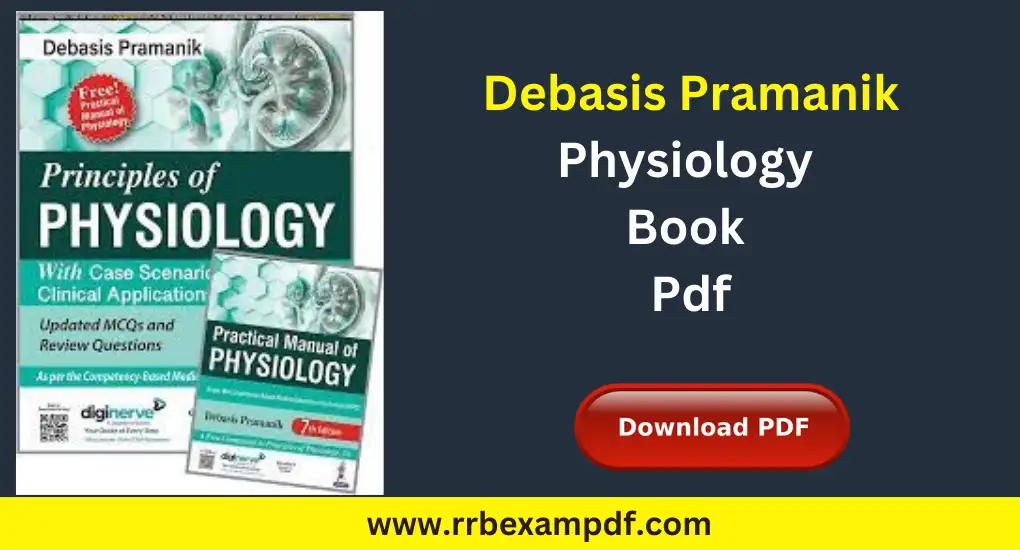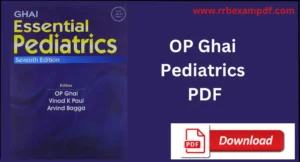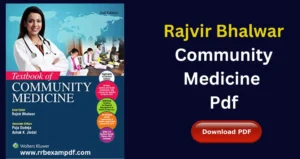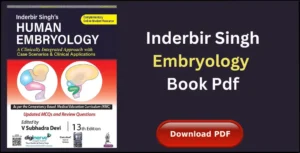Debasis Pramanik Physiology Pdf: Latest Edition of Debasis Pramanik Physiology Pdf free download, Debasis Pramanik physiology latest edition, Debasis Pramanik physiology google books, principles of physiology by Debasis Pramanik.

Contents in Debasis Pramanik Physiology Pdf
The Physiology book by Debasis Pramanik has 13 sections with a total of 110 chapters. These names are the following:
Sections 1: General Physiology
- Structure of a Cell
- Genes and Protein Synthesis
- Transport Protein in Cell Membrane
- Transport Across Cell Membranes
Section 2: Nerve Muscle Physiology
- Resting Membrane Potential
- Action Potential
- Neuromuscular Junction
- Mechanism of Muscle Contraction
- Properties of Skeletal Muscle
Sec. 3: Hematology
- Functions of Blood and Blood Volume
- Composition of Blood and Plasma Proteins
- The Red Blood Cells
- Hemoglobin
- White Blood Cells
- Platelets and Blood Coagulation
- Blood Group
- Immunity
Section 4: Respiratory System
- Introduction
- Lung Ventilation
- Mechanics of Breathing
- Oxygen Transport
- Carbon Dioxide Transport
- Neural Regulation of Respiration
- Chemical Control of Respiration
- Miscellaneous Topics (Respiration)
- Lung Function Tests
- Respiratory Diseases
Sec. 5: Cardiovascular System
- Functional Anatomy
- Characteristics of Cardiac Muscle
- Cardiac Cycle, Venous Waves, and Venous Return
- Cardiac Output
- Cardiovascular Regulation
- Blood Pressure and its Regulation
- Heart Rate
- Cerebral Circulation
- Coronary Circulation
- Other Circulation
- Electrocardiogram
- Effect of Gravity and Exercise on Circulation
- Hemodynamics
- Circulatory Shock
- Cardiac Failure
Section 6: The Digestive System
- Introduction
- Gastrointestinal Hormones
- Salivary Glands and Saliva
- The Stomach
- Exocrine Pancreas
- The Liver
- Small Intestine
- Movements of the Gastrointestinal Tract
- Digestion
Sec. 7: Excretory System
- Nephron
- Glomerular Filtration
- Tubular Reabsorption
- Concentration of Urine
- Regulation of Acid-Base Balance
- Features of Urine
- Micturition
- The Skin
Section 8: Metabolism
- Enzymes and Carbohydrate Metabolism
- Protein Metabolism
- Lipid Metabolism
- Vitamins and Nutrition
Section 9: Endocrine System
- Mechanism of Hormone Action
- The Pituitary Gland
- Thyroid Gland
- Adrenal Cortex
- Adrenal Medulla
- The Calcium-related Hormones
- Endocrine Pancreas
Sec. 10: Reproductive System
- Sex Differentiation
- Male Reproductive System
- Female Reproductive System
- Pregnancy and Lactation
Section 11: Nervous System
- Anatomical Cosiderations
- Neuron
- Synapse
- Receptor
- Reflex
- Sensory System
- Motor System
- Cerebellum
- Basal Ganglia
- Muscle Tone
- Maintenance of Posture and Equilibrium
- Hypothalamus
- Autonomic Nervous System
- Thalamus
- Sleep and ECG
- Neurotransmitters
- Cerebral Cortex
- The Limbic System
- Higher Functions
Sec. 12: Special Sense
- Structure of the Eye
- Optics of the Eye
- Photochemistry
- Visual Pathway
- Miscellaneous Topics
- Hearing
- Taste Sensation
- Olfactory Sensation
Section 13: Advanced Topics
- Memory
- Smooth Muscle
- Exercise Physiology
- Food Intake and Satiety
- More About Cerebral Cortex
- More About Sleep
- Aging, Circadian Rhythm, and Space Physiology
- Important Additions 1
- Important Additions 2
Download the pdf of Debasis Pramanik Physiology
To download the pdf of Physiology by Debasis Pramanik sir, You can download the book from the link given below or you can purchase it from Amazon Online.
Disclaimer: We have neither copied nor scanned this book, we are only sharing the links already available on the internet for the purpose of education. If any person/organization has any objection related to these notes/books, please contact us, and we will remove these links as soon as possible. Email – rrbexampdf@gmail.com
- Also read: AK Jain Physiology Pdf



